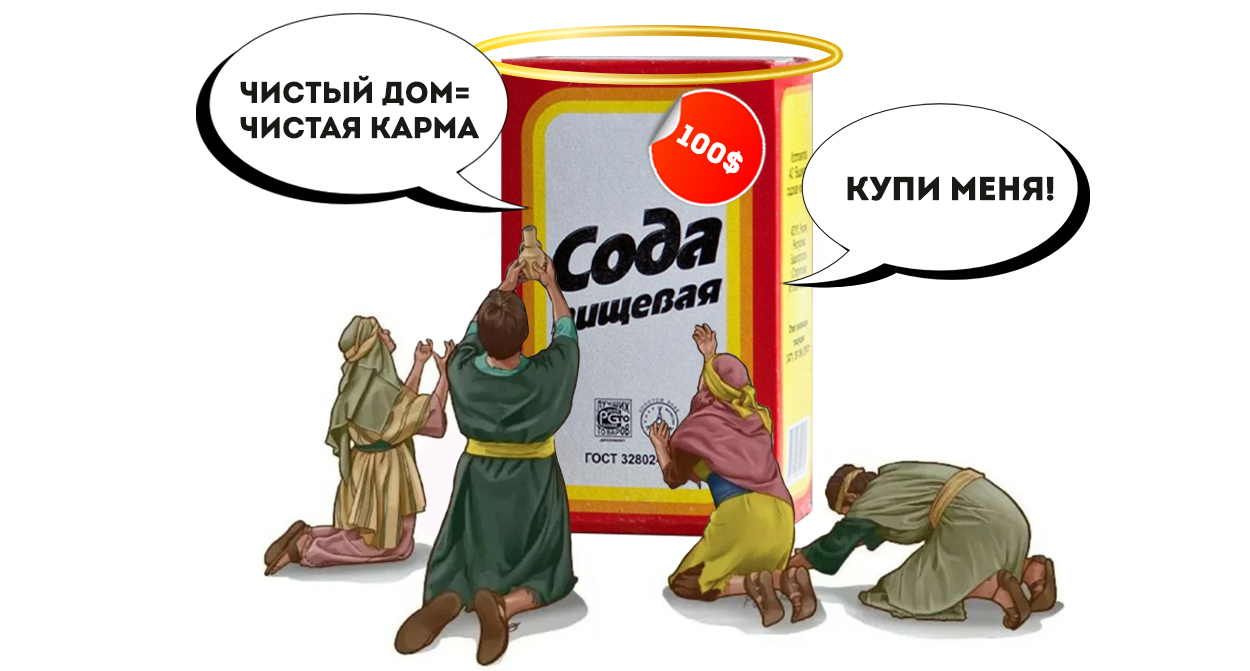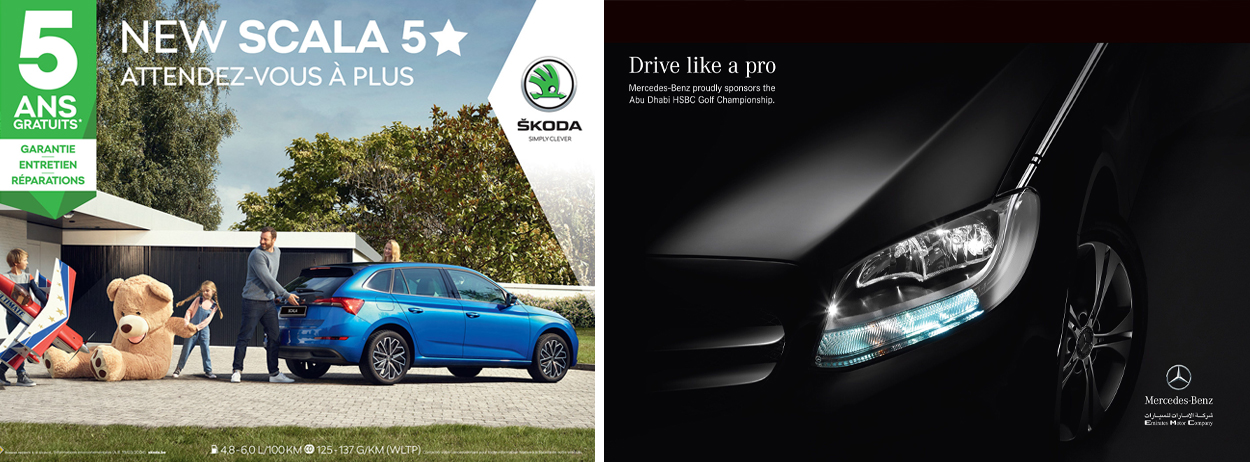.png&w=3840&q=75)
To understand how branding works, how it is developed, where to start and what to pay attention to, it is necessary to delve into its origins. After all, considering the selection of a font or color as one of the fundamental techniques would be a grave mistake.
Excess environment
Let's start with the concept. Excess of goods is the excess of the volume of goods available on the market over their sales. It is defined as the difference between goods supplied and goods sold. Due to this excess, the product loses its value for the consumer and does not bring complete psychological satisfaction.
For example, a buyer does not get much pleasure from buying baking soda, although it is a useful and high-quality product. Thus, the buyer receives significant excess or additional satisfaction over and above the price he paid. This is called consumer surplus. That is, consumer surplus is what a person is willing to pay minus what he actually pays.
In an ideal Protestant world, the philosophy of competition would be based solely on increasing the quality of a product or its volume, but such an approach is contrary to the modern oversupply of industry. Creating something that will last forever is not profitable or something exclusive, expensive, or rare.

Understanding this dogma, the following conclusion suggests itself:
The manufacturing company has the opportunity to use the value of consumer surplus to spend on the “correct” presentation of the product (packaging, analytics, advertising campaigns) without changing the product, and even sometimes on the contrary, worsening or reducing its volume in order to allocate a larger part to marketing funds. By also creating a more attractive image, the manufacturer can even increase the cost.
This creates modern competition between goods. It is worth noting that competition can be both within one group and between different groups of products.
Let's imagine a typical clerk thinking about lunch. The standard solution would be to go for a business lunch. If there are three restaurants nearby with special lunch offers, then there is direct competition between them. At the same time, all three can compete with the recently installed ready-to-eat vending machine in the lobby of the office center. Further, the very concept of a full meal can compete with a cup of coffee and Snickers from Pyaterochka. And don’t forget that lunch could have been prepared and carefully packed into a container by a loving spouse or mother.
This is where the need for communication between the product and the consumer arises through the coincidence of values. That is, our clerk will choose the type of lunch based not on logical components (volume, quality, price), but on emotional ones.
Communication
As strange as it may sound, things began to talk to people.
Based on certain signals (color, font, meaning of the name, high cost of packaging, popularity, brand affiliation and its philosophy), we begin to separate products into ours and not ours - which ones we want to be friends with and take home, and which ones we don’t.
On the shelf of a modern bookstore you can find dozens of books on this topic, but everything is quite trivial - the product simply must correspond to the values of the target audience. It must have character, history, habits, strengths and weaknesses, it must perform an ideological function and visually delight its target audience.
Let me remind you that we are not talking about the properties of the product, but about the fictitious character that the manufacturer gives it.
Marketing is for money, but branding is for love.
The “character” of a product is a brand, something that should resonate with the heart of the consumer. And this should happen at first sight.
From this moment on, two main voluminous questions arise:
- How to “invent” a brand correctly, and so that everything together is not nonsense?
- What can be done to ensure that the right buyer likes it?
What is branding (a farmer's tale)
This mystical term is best explained through a fairy tale... For several years now, farmer Vasya from village B has been coming to village A and successfully selling milk. The milk is fatty, fresh, sweet - it’s sold instantly! But what a misfortune, farmer Petya from village B also began to come to the same village A. His milk was of the same quality, so they bought it from both farmers. Naturally, both returned home with unsold surplus.
Vasya got used to good earnings and began to think about how to make sure that his milk was bought better than Petino. And he came up with the idea of selling it not from a can on tap, but in clay jugs. This made it easier to bring the milk home and store it. The vessels could be reused and received a discount for it. To avoid confusion, Vasya burned “Milk from Vasya” on the neck.
This is how the first trademark appeared in the village. Vasya’s trade went uphill. He again fully sold all the imported milk, unlike Petya. Petya subsequently also made changes in his trading. He repeated Vasya’s trick and ordered pots with the inscription “Milk from Petya.” This is how two dairy brands appeared in village A.
Naturally, both returned to the original problem. Then the inventive Vasya decided to tell the residents of village A about his unique technology for caring for cow cows, thanks to which the milk is so tasty that only highly spiritual people work on his farm, and that he gives part of the proceeds to an orphanage. In general, milk is truly good and beneficial.
This is how the brand “Good Milk from Vasya” appeared. I think you can guess about the subsequent events. After creating the brand, the process of rebranding, analytics and even connecting artificial intelligence began, but that’s another story.

Where to start and how to “come up” with a brand?
Of course, brand formation does not come out of thin air and many things are simply not compatible. It is unlikely that classic Snickers will be able to win over the audience of diabetics by positioning itself as a healthy snack. And there is no need for this, there are enough buyers for everyone!
- At the beginning, a business study takes place: how the owner sees the product, what are the strengths and weaknesses of the company, what is the focus, what is the philosophy. Thanks to this, you can understand the “historical” origin of the product and what initial philosophy it carries.
- Next comes a more extensive study of the product itself, the consumer, competitors, market and trends. Thanks to this stage, we get a complete picture for future work.
- Collecting conclusions and analysis results, selecting a hypothesis for the brand archetype (more on this concept later), collecting visual ideas for its presentation and development in the future.
- Interim approval with the Customer and launch of the development of the brand and its components. It is impossible to describe this stage in more detail, since each product is unique and has a different target audience. For example, have you ever seen a Lamborghini or Ferrari commercial on TV? No, because their audience doesn’t watch much TV and this product is sold through premium brand channels.
Archetypes
As has already been noted, all products have their own character, which can please or, conversely, repel the consumer. The classification of product archetypes is consonant with the classification of consumers (people) themselves: parent, lover, rebel, hero, ruler, and so on.
The archetypal personality of a product speaks directly to an image imprinted in the depths of the psyche, awakening a sense of awareness of something familiar and meaningful.
To understand what this looks like in practice, let's compare advertisements for the Skoda and Mercedes car brands.
Skoda to a greater extent (we do not take into account the premium Superb line) is the “Parent” according to the classification of archetypes. This archetype is suitable for brands that support family values and are associated with care, which can be associated with medicine, education, children's products or banking products, for example, like a family mortgage. For visuals, images of family, parents, children, traditions, homeland and simple happiness are most often used. Mercedes, on the other hand, is the “Ruler” brand.
His goal is to create a prosperous, successful society. His strategy is power. This archetype is associated with high status, superiority, organization, stability and cannot in any way be a “people’s” brand. The visual will be minimalistic, not colorful, with expensive, but not pretentious accents (panther, half-naked stylish girl, airplane wing). Or the visual will generally be focused exclusively on the advertised product or sensations.

And finally the answer about rebranding
Before deciding to rebrand, you need to do the same research as you would with branding. Over time, the company's philosophy and the economic situation as a whole could change greatly. Naturally, it will not be easy to abstract and even abandon previously formulated principles.
It will also be necessary to assess the potential of the current target audience and the desired one, since the main mistake when rebranding is considered to be a failure to understand the risk of the existing audience leaving in pursuit of a new one. Conduct research on trends and buyer behavior today. It can change a lot in just a year.
For example, after the pandemic, the online sales sector began to develop strongly and, of course, it will only gain momentum. And most importantly, do not get carried away with mimicry in your niche, especially if you are the owner of an already established popular brand. By copying another more famous brand, you are unlikely to win over its fans, but you may lose your own. After all, buyers chose you precisely for that “character” that the copied competitor does not have!
Good luck with your branding & rebranding!
